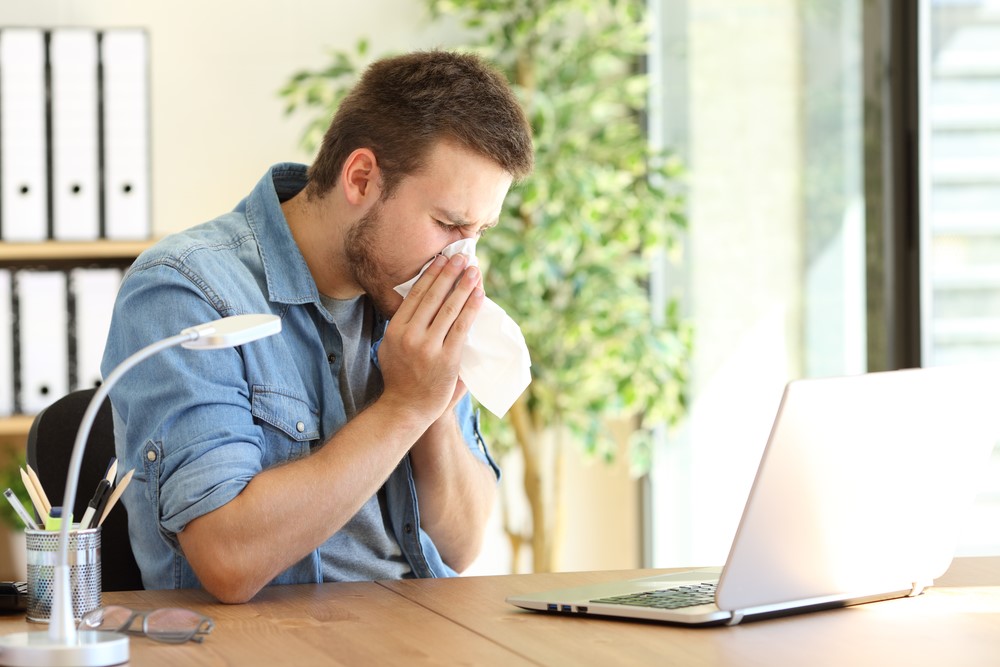By Guest Blogger, Cassie Brewer.
Spring is the season for sunshine and blooming flowers, but it is also the prime season for allergies. Although outdoor allergens often take the bulk of the blame, indoor factors could actually be the main culprit of your sneezing or itching. According to Allergy UK, between 10-30% of adults and up to 40% of children suffer from hay fever. Allergens such as dust, mould, pollen, and pet dander could be all over your home causing allergy flare ups for you and your family. Often these particles can be found in common home decors. Consider replacing or throwing out these home decorations that could be flaring up your symptoms:
- Scented Candles – Many scented candles contain allergy-irritating chemicals that can be released when burning. The chemicals in these scented candles could be a big factor in your indoor allergy attacks. The soot and ash from the candles can also be irritating allergies and also be affecting those with asthma. Consider switching to soy based or beeswax candles with a bamboo wick to reduce chemicals as well as reduce the amount of smoke and ash in your air. Another alternative is to use unscented candles or flameless candles if you are simply looking to use candles as decoration.
- Air Fresheners – Just like scented candles, air fresheners, can also release allergy-irritating chemicals into the atmosphere. Instead switch to more natural home fragrance options such as using essential oils and a vaporiser or boiling citrus peels and cinnamon. These natural alternatives smell great and will help ease allergy symptoms as well.
- Real Flowers – Flowers can help bring some colour and life to a home, but often they drag in pollen and other allergens inside. Replace fresh blooms with some synthetic flowers, such as silk flowers, to still get that liveliness for decorating without the sneezing. There are also hypoallergenic varieties of flowers that can help reduce allergy reactions.
- Plants – Houseplants have many different benefits such as cleaning your home’s air and helping to put you in a good mood. However, the soil from such plants can also be a breeding ground for mould. If you find yourself sneezing and having difficulty breathing near your house plants they may have mould and you will have to throw them out. Instead, consider buying air plants or water plants that do not need soil to grow.
- Carpet – Carpet can often hold dust mites and other particles that cause allergies to flare up. Vacuuming carpet regularly can help to reduce reactions; however, the best option is to replace carpet with hardwood floors or tiles. Vacuuming might clean carpet, but it can also bring dust to the surface and into the air in your home.

- Pillows– Another place dust mites can often appear are on pillows. If you find you are waking up itchy or with dry skin you might have dust mites in your pillows or bedding. One solution is to use dust mite covers on both your bed pillows and your throw pillows.
- Furniture – Although couches are often known to not just be another harbour for dust mites, leather couches can also cause some allergies. Many leather couches use a chemical to prevent fungus from developing. This chemical can sometimes be a skin irritant for some. Consider buying a natural fibre couch that can easily be cleaned.
- Fans – Ceiling fans and free standing fans are great for the summer heat, but can easily spread dust and other pollutants to spread through the air in your home. Instead switch to an air conditioner unit or use an air cleaner alongside your fan.
- Fireplaces – While wood-burning fireplaces make a great feature in a home, the ash and dirt from actively using a fireplace tend to flare up allergies. Consider using the fireplace as simply a decorative feature in your home and use one an alternative fireplace
- Plastic Blinds – Dust tends to collect on plastic blinds, especially as these are close to the window where dirt from the outside can enter. Make the switch from plastic or wood blinds to washable blinds or natural fabric curtains. These alternatives can easily be tossed into the washer when they become too dirty.
Home-decorating can be a fun process that turns a house into a home. However, make sure to keep in mind that there are alternatives that can be better for you and your family’s health. Indoor allergies often get overlooked as the culprit for all the sneezing, itching, and irritation. Using some simple alternatives in your home can help reduce your allergies and still have a stylish home.


